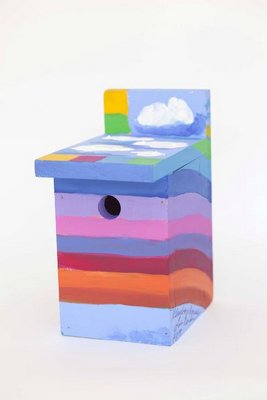
Raun Norquist’s backyard in Sag Harbor was a disaster waiting to happen. And on Long Island—where almost all homes are equipped with septic systems—hers is not an uncommon story.
“My septic system was probably installed in 1936, when the house was built, and it failed,” Ms. Norquist recalled during a telephone interview last week. “The yard, it was mushy and it stunk. It hadn’t gotten as far as coming back into the basement or the house, but it was definitely a nightmare.”
Desperate for an affordable and effective solution, Ms. Norquist installed the Pirana—a natural septic management system that drops into an existing tank—in 2002, not knowing what to expect.
To her surprise, the stench cleared up 24 hours later. After a week, she took a water sample from the tank. Instead of brown sludge, it looked like weak tea. And now, a decade later, she hasn’t had one problem with the system, she reported.
Despite her success with Pirana, the system hasn’t taken off on Long Island, according to Ms. Norquist, who is now the system’s marketing partner for Suffolk County. Just a “mere handful” have been installed on the East End—and most of them are in her neighbors’ yards in Sag Harbor.
“It’s a hard sell because no one ever fixes something they don’t have to,” she said. “So unless it’s up around your ankles, very few people are proactively doing something. But for the systems that fail, sometimes this is their only option.”
A conventional septic system is comprised of three parts—the tank, the disposal field and the soil. The tank removes most of the solid waste from the water and stores it until pumped. The disposal field spreads the remaining liquid from the tank over a large underground area of soil, which is inundated by microbes that eat the remaining waste to purify the water.
An aerobic tank, such as the Pirana, introduces air to the system and combines the first and final steps by growing oxygen-breathing bacteria that digest and remove solid waste inside the tank.
The Pirana—a 35-pound, 3-feet-tall cylinder that is a foot in diameter—aerates and circulates more than 25,000 gallons of water per day through 150 square feet of cuspated, or angularly ribbed, plastic where colonies of bacteria attach, thrive and digest waste from the household. The microbes put off a small amount of carbon dioxide, Ms. Norquist said, which is absorbed by the atmosphere.
But what kind of bacteria is it that is so effective at digesting and removing the solid waste?
“The type of bacteria is the trade secret,” Ms. Norquist explained. “There is a small, low-pressure air line—something similar to a fish tank—that runs off a very small pump about the size of a toaster and it creates bubbles of a certain size and a certain frequency that come up through this cylinder, supercharging the bacteria.
“We’re the producers of the problem,” she continued, explaining that it is human waste, “and the other problem is we use pristine water to take our waste away. That’s why it’s helpful to have this very vigorous blend of proprietary bacteria and give them an environment with all the right oxygen at the right speed and size they like, and then they’ll go up and clean up that water.”
After dropping the system, which costs $3,000, into a Suffolk County-approved septic tank, it can be up and running in less than four hours, Ms. Norquist said. A check-up is recommended once a year, she said. Electricity costs are about $5 per month—on par with powering a fish aquarium full time, she said. A new batch of bacteria, which is sometimes required for part-time residents who shut down their homes in the winter, runs less than $20, she said.
“But as long as you have the house running and people using the waste system, [the bacteria] continues to grow,” she pointed out. “It has completely eliminated pumping. Forever. By removing the solids, it’s removing the need to pump. It’s not taking your problem and moving it down the road to a bigger, more expensive municipal system. And you’re doing something good for the planet! This is like, what’s not to like? Even if it didn’t do anything else other than to relieve the pressure on the municipal systems, it would be a miracle.”